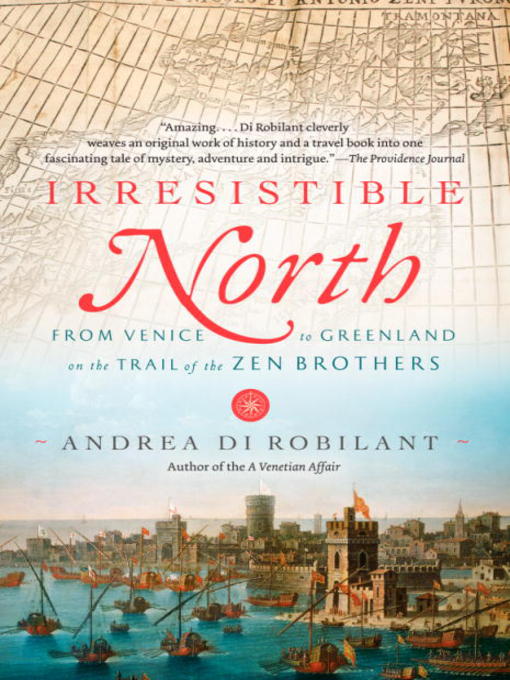
Irresistible North
From Venice to Greenland on the Trail of the Zen Brothers
کتاب های مرتبط
- اطلاعات
- نقد و بررسی
- دیدگاه کاربران
نقد و بررسی

March 1, 2011
Engrossing investigation of significant Age of Discovery journeys.
The letters written by the 14th-century Venetian Zen brothers, two of the earliest explorers of the North Atlantic, provided the basis for a 1588 travel narrative that included a possibly forged map of the North Atlantic, which instigated a storm of debate that continues to this day. Fast-forward 400 years and a chance meeting at a library in Venice, which piqued di Robilant's (Lucia: A Venetian Life in the Age of Napoleon, 2008, etc.) curiosity and sent him on a quest to investigate the adventures of the two men. Interestingly, the brothers' explorations were done sequentially, rather than together. Nicolò spent nearly five years in the northern reaches of Great Britain and Iceland, establishing a comradeship with the Scottish lord Henry Sinclair. Antonio took over Nicolò's quest and led his fleets as far as Newfoundland and Nova Scotia during the next decade. The author impressively deciphers the differences between the book published in Venice in the 16th century and the possible realities of the information gleaned from what actually was only five letters. What firmly established the fame of the Zen map was inclusion in Gerardus Mercator's World Map of 1569, which revolutionized navigation by flattening the spherical surface of the globe into a flat plane. Academics have debated the veracity of the Zen story, and more importantly, the Zen map of the North Atlantic since it was published. However, the influence of the Zen map cannot be overstated, particularly as it was the only available map of the North Atlantic.
The author's painstaking detective work thoroughly limns the controversies that have plagued the Zens for 500 years.
(COPYRIGHT (2011) KIRKUS REVIEWS/NIELSEN BUSINESS MEDIA, INC. ALL RIGHTS RESERVED.)

Starred review from April 15, 2011
In this engaging book about a historian in pursuit of a riddle, di Robilant (Lucia: A Venetian Life in the Age of Napoleon) relates not just what he found but how he found it and both what he knew and didn't know by the end of the quest. It's the best kind of history: scrupulously honest, with attention to detail, and never exaggerated. The puzzle is a centuries-old map, supposedly drawn by the Zen brothers--merchants, sailors and explorers in late 14th-century Venice. The map was said to incorporate what they discovered on their groundbreaking excursions into the sub-Arctic North Atlantic. But is the map, which appeared only in print a century and a half later in a book by a Zen descendant, authentic? VERDICT Di Robilant's book is rich in exotic detail (e.g., as he visits a burning mountain on the Greenland coast), but at heart it is very modest, a work in which the author never claims to know more than he does. His unassuming mastery of the facts illuminates this little-known episode in late medieval history.--David Keymer, Modesto, CA
Copyright 2011 Library Journal, LLC Used with permission.

March 15, 2011
In 1378, Venetians Nicol and Antonio Zen set out to gain a foothold in the rich, emerging markets of Northern Europe. What followed was an unanticipated nautical trek across the frozen North, the details of which were compiled in 1558 by descendant Nicol the Younger and inspired opportunistic monarchs, including Englands Elizabeth I, and notable cartographer Gerard Mercator. Later investigations, however, proved the Youngers influential Renaissance account and cartography to be a remarkable hoax. Coming to the defense of his fellow Italian, di Robilant capably weaves intriguing tales of local culture and lore into what is a pleasurable read. While di Robilants rich descriptions of the North Atlantics frigid landscapes and murky past certainly stimulate the senses and engage the imagination, his case for the validity of the Zen brothers work ultimately comes up short. His argument is admittedly contingent upon broad conjecture, and in the end he blames envy and even fascism for attacks on the works legitimacy. That said, this engaging and lucid book should please fans of travel literature.(Reprinted with permission of Booklist, copyright 2011, American Library Association.)

























دیدگاه کاربران